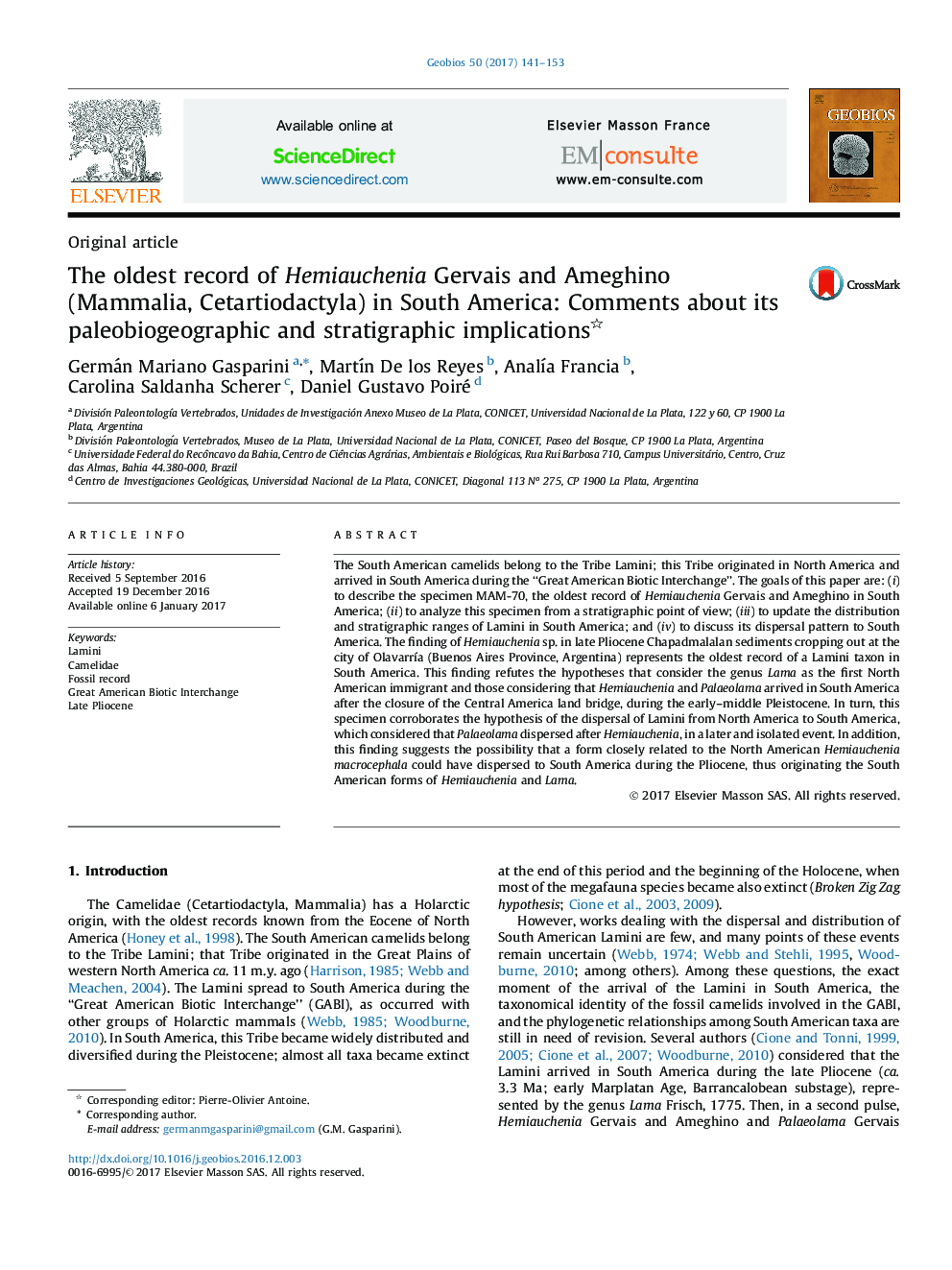| Article ID | Journal | Published Year | Pages | File Type |
|---|---|---|---|---|
| 5788134 | Geobios | 2017 | 13 Pages |
The South American camelids belong to the Tribe Lamini; this Tribe originated in North America and arrived in South America during the “Great American Biotic Interchange”. The goals of this paper are: (i) to describe the specimen MAM-70, the oldest record of Hemiauchenia Gervais and Ameghino in South America; (ii) to analyze this specimen from a stratigraphic point of view; (iii) to update the distribution and stratigraphic ranges of Lamini in South America; and (iv) to discuss its dispersal pattern to South America. The finding of Hemiauchenia sp. in late Pliocene Chapadmalalan sediments cropping out at the city of OlavarrÃa (Buenos Aires Province, Argentina) represents the oldest record of a Lamini taxon in South America. This finding refutes the hypotheses that consider the genus Lama as the first North American immigrant and those considering that Hemiauchenia and Palaeolama arrived in South America after the closure of the Central America land bridge, during the early-middle Pleistocene. In turn, this specimen corroborates the hypothesis of the dispersal of Lamini from North America to South America, which considered that Palaeolama dispersed after Hemiauchenia, in a later and isolated event. In addition, this finding suggests the possibility that a form closely related to the North American Hemiauchenia macrocephala could have dispersed to South America during the Pliocene, thus originating the South American forms of Hemiauchenia and Lama.
